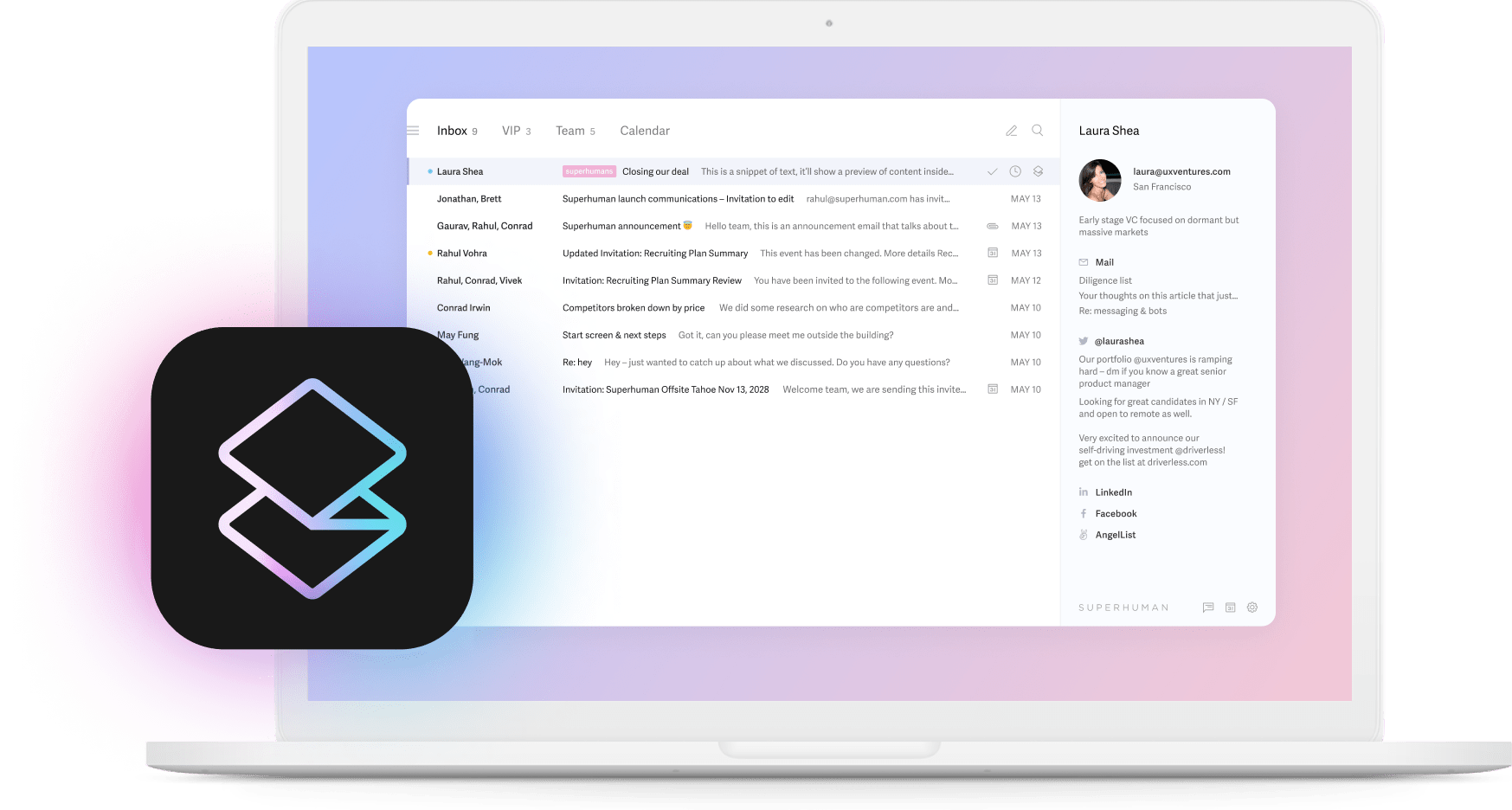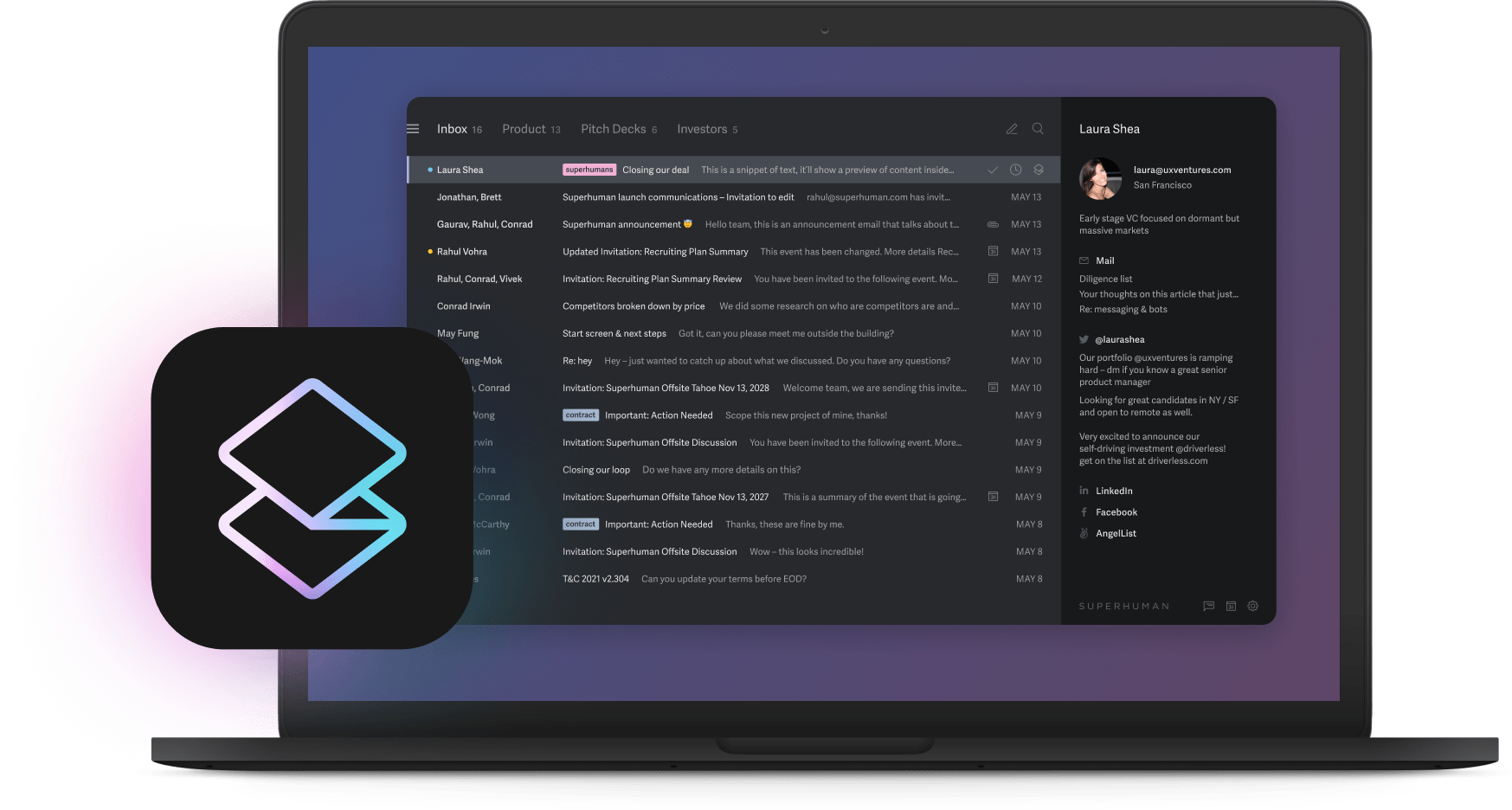
It's the end of the workweek and, as usual, your inbox is overflowing.
The number of unread messages slowly ticks up, first into the hundreds — then the thousands. You know you're missing important emails in there, but at this point, your inbox is a lost cause. You'll never sort through the weeks, months, or years of neglected messages — including spam, unread newsletters, and many other unnecessary types of communication — and get to the important parts.
This scenario is all too common.
In 2021, there were an estimated 319.6 billion emails sent and received around the globe every day. Experts believe that the average person sends and receives 126 business-related emails per day — and that's not even including personal messages, subscriptions, junk, and spam. That's nearly 1,000 emails each week, not counting the clutter that clogs up your inbox and causes you to miss the messages that do matter.
In other words, if you're staring down a constantly growing number of messages in your inbox, you're not alone. If you're wondering, "How do I empty my inbox," read on. We have all the tips you need to get your inbox under control and achieve Inbox Zero — and then stay there.
5 ways to empty your inbox
There are many reasons why someone might want to clean up their inbox.
Like in the scenario above, a disorganized inbox might be causing them to miss important messages amid the chaos.
They might be running out of storage space and need to make room to keep using their long-time email address.
They might be looking to reap the benefits of Inbox Zero — a framework for getting your inbox down to zero unread messages each day in order to save time spent thinking about email.
Regardless of your reason for doing so, below are five ways to empty your overflowing inbox. Different methods will be the right choice for different people, so read each to decide which one is the best for you.
Option 1: Go nuclear
It's entirely possible that your inbox is in such bad shape, it's time to cut your losses and start fresh. If you choose this option, you accept that there are messages in your inbox that contain important information, but you're never going to find them, so it's OK to let them go for now. Option one — going nuclear — means simply deleting everything in your inbox to create a clean slate to keep organized in the future.
Almost every email platform offers a way to select all messages in your inbox:
- In Gmail, select all messages by pressing Ctrl+A on Windows or Command+A on Mac. Alternatively, look for the checkbox on the top left side to select all.
- In Yahoo Mail, click the checkbox at the top of mailbox view. This only selects emails visible on screen, so once you hit the delete button, you may need to repeat the process to trash all the messages in your inbox.
- In Outlook, open your webmail. Gto File -> Tools -> Mailbox Clean-Up.
Use a desktop email client to empty your inbox. Most mail apps for Android, iPhone, and iPad make it difficult to bulk delete emails, often requiring you to select each email individually. If you're deleting hundreds or thousands of emails, this can take a long time.
Sidenote: Once you've deleted all the messages in your inbox, you may want to go to your trash folder and repeat the process. Deleted items will be removed from your trash automatically after some time, but especially if you're trying to free up some storage space, it doesn't hurt to hit "empty trash can" manually.
Further Reading: How to delete all emails on Gmail.
Option 2: Delete all messages in a certain folder or tab
Different email providers offer different ways to organize your inbox, and you can take advantage of those to quickly clear out unimportant and unneeded messages.
If you've ever organized messages into folders or labels, you can use the select all and delete steps outlined above to delete any of those groupings you no longer need. Gmail also offers a handy sorting mechanism for its personal inboxes, where newsletters and subscriptions get automatically filtered into a "promotions" tab, while social media updates and messages get filtered into a "social" tab. By going to either of those tabs, you can select all and move to trash, removing a ton of messages from your inbox that are often unnecessary.
Option 3: Delete certain messages using search
Similarly, you can delete certain types of messages by using different commands in the search bar to find them in an overflowing inbox.
The exact commands you can use in the search box will differ based on what type of email account you're using. But you can typically search by sender, date, attachments, keywords, and more.
For Gmail, some particularly useful search commands are:
- In:[mailbox name] for searching for messages in your inbox, spam folder, trash folder, or other locations.
- From:[name] to search for messages from a specific contact.
- Has:attachment to search for all messages that have attachments.
- Filename:[file type] to search for emails with attachments of a specific file type, such as jpegs or PDFs.
- Size to search for messages that are a specific size. You can also use larger: or smaller:.
- Before:[date] to return all messages you received before a certain date.
- older_than:[# of d (days), m (months), or y (years) to search for all messages older than a specific range of time; for example, 2m for two months. You can also use younger_than:.
You can also search for specific keywords. For example, if there's an old client you no longer work for, searching for their company name can help you delete all those old messages you no longer need.
Research your email provider to see what commands it uses — they may be slightly different than the Gmail commands, but most email clients offer similar search capabilities.
Optional Reading: How to Delete all Emails on Gmail.
Option 4: Triage your inbox
If you want to empty your inbox, but you can't risk deleting any unread emails that might be important, triaging your inbox can help. This is a method of going through new messages every day and taking action on each of them — keeping your inbox organized at all times. The method can be applied to old emails as you clean out an overflowing inbox, but it will take some time and effort.
Triaging your inbox starts with four different types of tasks that can come from an email. Each message in your inbox requires you to:
- Do something for someone else.
- Make a decision.
- File or archive some information.
- Delete something.
As you move through your messages, triage them as soon as you read them — either take the necessary action by responding, forwarding emails, deleting them, marking emails as read or even better: archiving them. That way, you touch each email one time, then organize it and move on. If you have thousands of messages in your inbox, this method will take time. But it can help you get a handle on an out-of-control inbox, and practicing the triage technique will help you keep your inbox organized in the future.
Option 5: Let Superhuman help
You don't have to empty your inbox alone. Superhuman can help.
Superhuman brings new features to your Outlook or Gmail account, helping you navigate your inbox faster and take action on messages faster than ever before. With shortcuts to Archive, Trash, Unsubscribe, Select, Select All, Select All From Here, and more, you can empty your inbox with nothing more than a few taps on your keyboard.
When you sign up for Superhuman, you can choose to schedule a session with an onboarding specialist who will work with you, one-on-one, to quickly empty and organize your inbox. They'll teach you the Keyboard Commands that will be most useful for your needs, helping you reach Inbox Zero in a single session. Later, you can reach out any time you have a question or need more tips for keeping your inbox empty and organized.


3 tips for keeping your inbox organized after it's empty
Reaching Inbox Zero is only the first step when it comes to taming your email inbox. Use the tips below to keep things organized — and keep your inbox empty.
1. Stop signing up for emails
Before you enter your email address at any website, think carefully about whether signing up for communication from that site will add value to your inbox, or just create more noise you have to deal with later.
Superhuman allows you to split your inbox, so these types of emails have somewhere to go when you can't avoid a sign-up — like when you're required to enter an email address or when doing so can get you a discount on a product or service, for example. That way, you can take advantage of the benefits, without the unwanted emails distracting you from the ones that matter. See how to set up a Split Inbox below.
2. Unsubscribe from unnecessary emails
As you empty your inbox, you'll probably notice that you're already signed up for a lot of mailing lists you don't want to be. Each of those emails should include an "unsubscribe" link that you can click to adjust your preferences and stop receiving those unwanted messages.
But manually searching to (and clicking) the unsubscribe link in every promotional email you no longer want can take a lot of time and effort. Services like unroll.me can aggregate all the mailing lists your email address is signed up for, and help you mass unsubscribe with just a few clicks.
Another option is to use Superhuman's Unsubscribe shortcut. Superhuman also allows you to block senders, if you want to stop receiving mail from a particularly persistent site. You can even block entire domains, and trash all messages from the unwanted sender at once.
3. Set up a Split Inbox
With Superhuman, you can get to Inbox Zero — fast. Then, they'll help you set up Split Inbox so you never miss another important message — and all the spam, junk mail, and subscriptions stop distracting you from work that matters.
Split Inbox uses AI triage to sort messages, making sure you see the most important ones first so you can respond or take action. Everything else goes into a different Split that you can check when you have time, or just mass delete or archive.


Superhuman is one of the best ways to empty your inbox and keep it that way. See how the fastest email experience on Earth can help you — sign up today.
